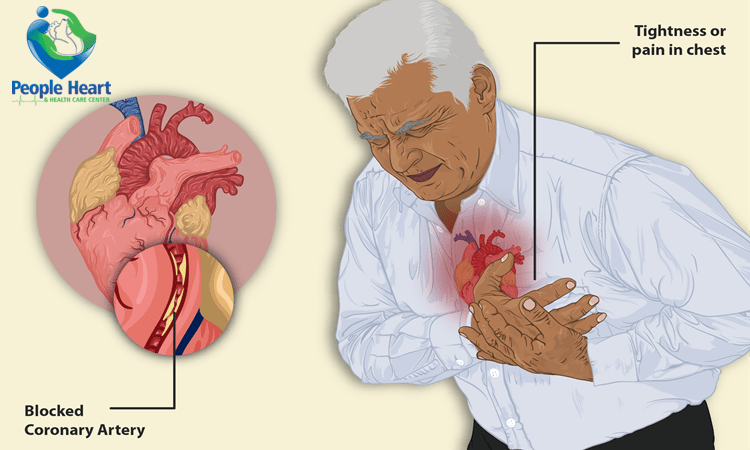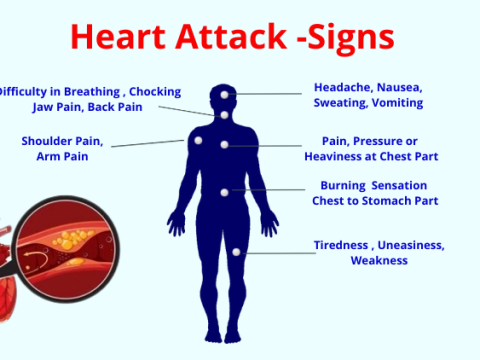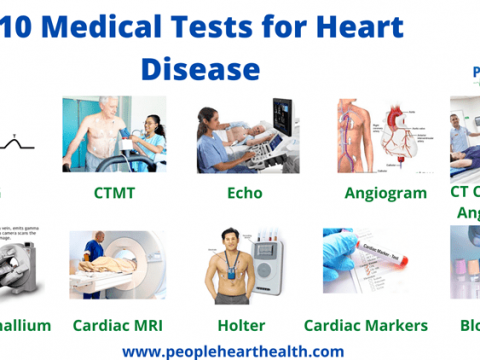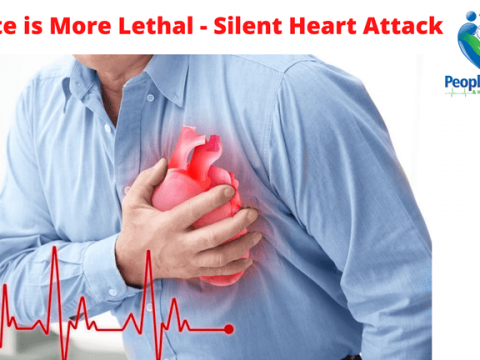
What is Angina | Symptoms and Types of Angina | How to Prevent it?
October 19, 2020
What are the Non Modifiable Risk Factors of Heart Disease, Know?
October 28, 2020When we are at child age, whatever fat we eat, consumed in our body growth. It is considered that after 18-20 years of age our body growth stops. After 18-20 Years of age whatever extra fat we eat starts depositing in our body.
This fat deposition may occur anywhere in our body and creates obstruction in blood flow. Blockage deposition mainly occurs around our stomach, face, neck, vertex, Thighs and arteries. When this fat deposition occurs in heart arteries it forms “Heart-Blockages” and generate coronary artery disease.
Heart blockages mainly composed of two molecules – “Cholesterol” and “Triglyceride”.
- Cholesterol – Source – All non-vegetarian foods, Milk and Milk Products (Paneer, Mava, Chena, Rasogulla, Curd, Butter Milk etc)
- Triglyceride – Source – All oils and oil seeds (Cashew nut, Almond, Walnut, Flaxseed, Pistachio and Groundnut)
Below 60-70% of heart blockages a person generally can do all the activities running, jogging, exercises, walk, cooking, outing and other physical walk. It means most of the heart patients even don’t know that they have heart blockage till blockages reaches 70%.
Symptoms of heart disease appears when blockages increase above 70%, like chest pain, shortness of breath, Ghabrahat, Pain in left hand, Shoulder pain, back pain, burning sensation at the centre of the chest, jaw pain, walk through angina etc.
Blockage formation starts inside the inner wall of heart arteries. blockage is covered by a membrane which is called endothelial membrane and when blockage increases continuously it creates a pressure on this membrane of the heart artery in the same proportion. This membrane has elastic property and it stretches till its capacity and after that it breaks and blockage comes in contact with the blood and makes a clot and becomes 100% blockage. It is called a “Heart-Attack”.
This artery membrane capacity varies from person to person. It may happen it breaks in a 60 -70% blockage in a person and may not break till 99% blockage in another person but after 60-70% of heart blockage it is considered significant and it may convert into a “Heart-Attack” at any time.
Types of Heart-Attack-
The two main types of heart attacks are:
- ST segment elevation myocardial infarction (STEMI)
- Non-ST segment elevation myocardial infarction (NSTEMI)
- ST segment elevation myocardial infarction (STEMI) – This is the most serious type of heart attack. It happens when a coronary artery is completely blocked which prevents blood flow to a large area of the heart. This causes progressive damage to the heart muscle. It’s a serious heart attack that can cause significant damage. STEMI shows significant changes in an electrocardiogram (ECG)
- Non-ST segment elevation myocardial infarction (NSTEMI) – NSTEMI heart attacks occur when the coronary artery is not completely blocked but blood flow is severely obstructed. Trop-T Test for these patients usually comes positive for a protein called troponin in their blood which is released from the heart muscle when it is damaged. These NSTEMI Sometimes called a mini heart attack or a mild heart attack, an NSTEMI heart attack usually causes less damage to the heart than a STEMI heart attack. There may be no significant changes in an electrocardiogram (ECG) in NSTEMI.
Some other types of heart attacks are-
- Silent Heart Attack
- Spasmatic Heart Attack
- Silent Heart Attack – As per the name, sometimes it happens that some people have a heart attack with no symptoms at all or with minimal symptoms, these are known as a silent heart attack. Although they don’t involve severe symptoms, they can cause permanent damage to the heart muscle. They generally seen in Patients with prolonged history of diabetes. Silent heart attacks account for about 45 percent of all heart attacks, according to Harvard Medical School.
- Spasmatic Heart Attack – A spasmatic heart attack happens when the internal walls of coronary arteries contracts and stick with each other in such a way that they restrict blood supply to the heart for few seconds which leads to chest pain and other heart-attack symptoms. Because the coronary artery spasm cut off blood supply for few seconds, it is call “Spasmatic Heart Attack”. It may not be discovered by an angiogram because it is not because of heart blockages. Spasmatic heart attacks usually cause less damage then other types of heart attack. Persons who do heavy physical exercise, exertion or have excessive mental stress, nicotine intake are prone to spasmatic heart attacks.
Heart’s pumping capacity is measured by function of left ventricular, it is called Left ventricular ejection fraction or LVEF.
Normal pumping capacity of heart (LVEF) is 60-65%
When 100% blood comes to heart, it pumps 60-65% of blood to the body, this is how heart’s pumping capacity (LVEF) is calculated
When a heart-attack occurs it generally causes damage in heart pumping capacity and LVEF decreases.
On the basis of Severity (Damage caused in heart pumping capacity (LVEF), Heart Attacks are of three types –
- Minor Heart Attack
- Major Heart Attack
- Massive Heart Attack
- Minor Heart Attack– When heart attack occurs in small tubes or at distal level of arteries and cause less damage or small area of heart damaged.
LVEF varies – 50-55%
- Major Heart Attack– When heart attack occurs in mid or proximal part of main arteries (LAD, RCA or LCx) and big area of heart damaged.
LVEF varies – 25-45%
- Massive Heart Attack– When heart attack occurs in Ostial part of main arteries in prominent location that a big portion of heart damaged. Sometime patient died on the spot in such heart attacks.
LVEF varies – 15-20%





